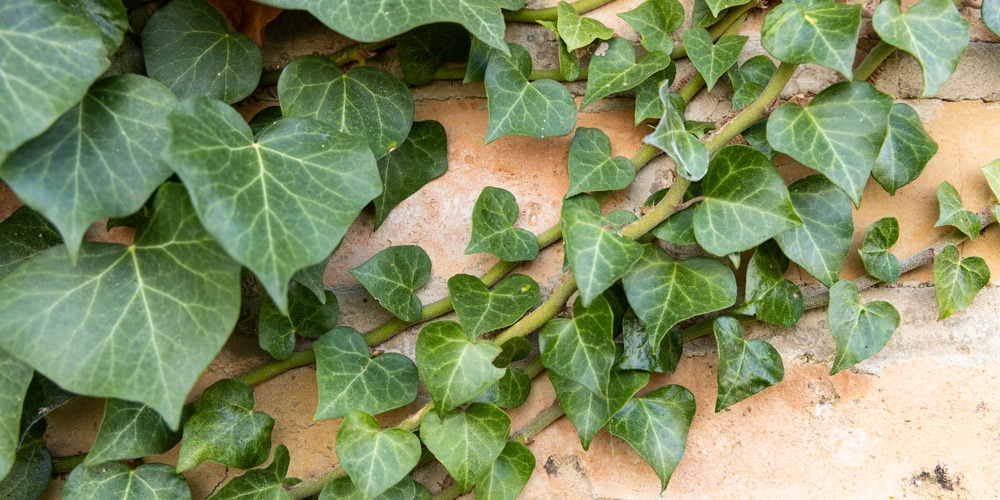Boston ivy and English ivy are similar plants but can be very different in some ways. Both plants may present differently in appearance, required conditions, and the level of maintenance they need.
These ivies can also be destructive to various degrees but differ in the way they may cause issues. Although they are different in many ways, there are some ways in which these plants are similar. For example, both ivies can have a level of toxicity, have similar uses, and have quick growth patterns.
Read on to learn about Boston Ivy vs English Ivy and how these ivies are different and similar.
Boston Ivy vs English Ivy: Differences

Boston ivy and English ivy are stunning plants found crawling up brick walls or covering ground in rural areas. However, they have many differences that can make one a better choice than the other.
Some families might be interested in one or the other for their home, but each can have its benefits or disadvantages.
Appearance
Although each ivy has a stunning coloration, they can appear very different during some seasons. Boston ivy will change with the season and can often have a reddish-purple tinge. English ivy will usually retain a rich green color year-long, however.
As winter approaches, the Boston ivy will change its color beginning with the edges and outsides of the leaves.
Plant Families
Boston ivy and English ivy are within different families, technically. Although these plants may look similar, they hail from separate families that resemble each other. Boston ivy comes from the Vitaceae family. Whereas, English ivy is from the Araliaceae family.
Grapes are also in the Vitaceae family, and like grapevines, Boston ivy produces a berry-type fruit that is toxic.
Destructive Behavior
Boston ivy is a touch more destructive than English ivy. Although this destruction is less severe, it can attach to surfaces and weave itself into screens, patios, and furniture. This ivy will find it difficult to let go when it has wrapped itself around an object. When left for some time, this plant grows roots into objects, walls, and items.
English ivy is a gentle plant that won’t cause as much damage as Boston ivy.
Boston Ivy vs English Ivy: Similarities
Although Boston ivy and English ivy are different in some respects, they can be similar in many others. Each ivy can be toxic to humans and animals. Each ivy is also used in similar ways and can familiarly grow across the ground.
Toxicity
English ivy and Boston ivy can produce small fruits that are toxic to both humans and animals. Pets are especially at risk when they consume these fruits. Dogs and cats can suffer from sore mouths, swollen lips, and abdominal pain. In some cases, when pets eat too much of these fruits, it can result in death.
Care and Maintenance
Boston ivy and English ivy are simple plants that don’t require much maintenance. These plants are similar because they will only require partial sun but may grow in full sun if they receive adequate watering.
Be careful not to overwater your ivies, however. These plants do not enjoy too much water and may be damaged when given too much water.
Otherwise, Boston ivy and English ivy don’t require much active care or maintenance.
Uses
Boston ivy and English ivy are similar because they have similar uses. These ivies are ideal for ground cover and will grow quickly, meaning they are perfect plants for lawn care or creating stunning landscapes.
These ivies are most often paired with brick walls or planted on the sides of buildings to create a stunning display.
Hardiness Zones
English ivy and Boston ivy have the same hardiness zones and will grow in the same conditions. Within zones four through eight, these ivies will thrive. These zones are the same for most maple trees, as well, meaning that these areas are rife with the ideal conditions for many robust, green foliage plants.
Hardiness zones four through eight include much of the Rocky Mountains, New England, and New York.
Final Words
Although there are some differences between Boston ivy and English ivy, both ivies are similar to each other and can offer similar uses. However, families, homeowners, and landowners may want to consider each aspect of the ivies before choosing one for their land.
While they can provide quick groundcover, each ivy can be toxic to humans and animals, meaning family pets may be at risk from the stunning display. Additionally, these plants can be invasive and quickly take over plenty of lands that some landowners may not want that land covered. Ivy can also climb trees and may even kill the tree if it’s not removed.
Another significant consideration is the care and maintenance that each ivy requires.

